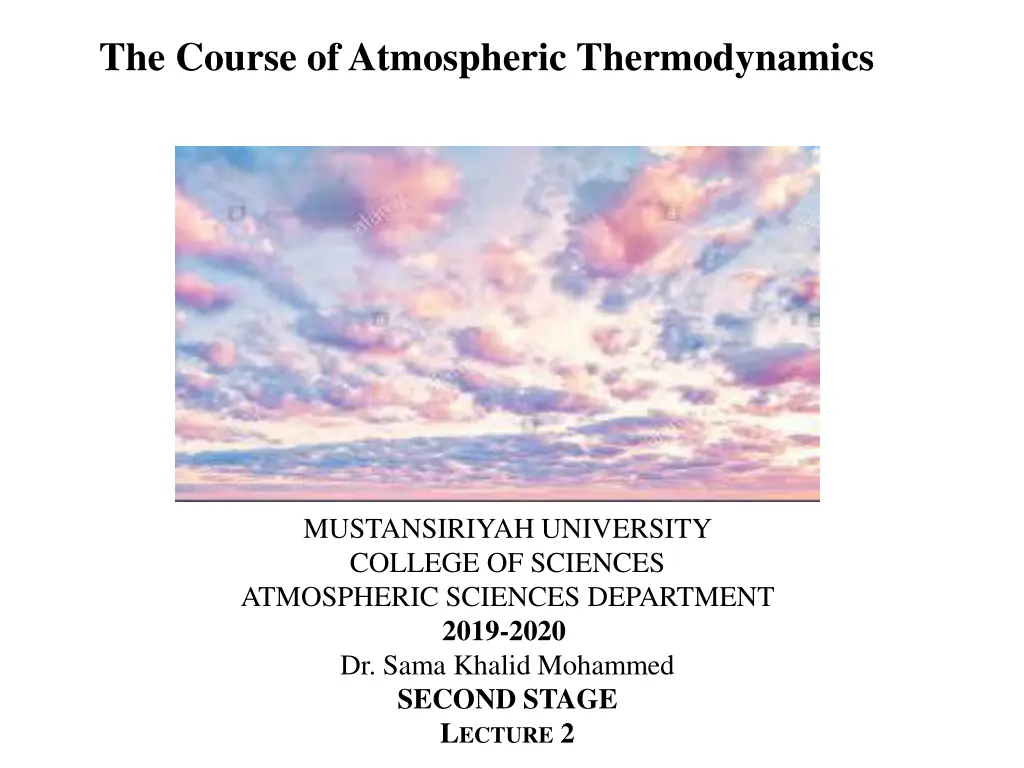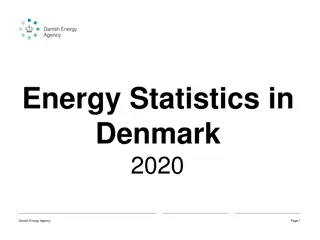
Understanding Atmospheric Thermodynamics: Dry Air, Stability, Buoyancy
Explore the concepts of dry air, stability, and buoyancy in atmospheric thermodynamics through this detailed lecture. Learn about the definitions of dry air, stability of dry air with adiabatic lapse rate, and the role of buoyancy in atmospheric conditions. Dive into the dynamics of potential temperature and the stability of air parcels in different atmospheric scenarios.
Download Presentation

Please find below an Image/Link to download the presentation.
The content on the website is provided AS IS for your information and personal use only. It may not be sold, licensed, or shared on other websites without obtaining consent from the author. If you encounter any issues during the download, it is possible that the publisher has removed the file from their server.
You are allowed to download the files provided on this website for personal or commercial use, subject to the condition that they are used lawfully. All files are the property of their respective owners.
The content on the website is provided AS IS for your information and personal use only. It may not be sold, licensed, or shared on other websites without obtaining consent from the author.
E N D
Presentation Transcript
The Course of Atmospheric Thermodynamics MUSTANSIRIYAH UNIVERSITY COLLEGE OF SCIENCES ATMOSPHERIC SCIENCES DEPARTMENT 2019-2020 Dr. Sama Khalid Mohammed SECOND STAGE LECTURE 2
This lecture including the following items DRY AIR DEFINITION STABILITY OF DRY AIR / DRY ADIABATIC LAPSE RATE BUOYANCY STABILITY IN A DRY ATMOSPHERE POTENTIAL TEMPERATURE
Dry Air Definition In meteorology, there are two ways in which dry air is referenced: A sample of air that has no water vapor (The amount of water vapor in the air depends on the dewpoint of the air). A sample of air that has a low relative humidity At a temperature of 30 C with a relative humidity (RH) of 50% the dew point is 18.45 C. For drier air with temperature of 30 C and RH of 20 the dew point is 4.61 C.
Stability of Dry Air DRY ADIABATIC LAPSE RATE
Stability of Dry Air DRY ADIABATIC LAPSE RATE This formula says that if you lift an air parcel adiabatically, its temperature will decrease, which makes physical sense because the parcel will be expanding.
Stability of Dry Air DRY ADIABATIC LAPSE RATE
STABILITY IN A DRY ATMOSPHERE Stability refers to whether an air parcel, one moved vertically, will continue to accelerate in the direction that it was pushed (unstable), or return in the direction from which it came (stable).
A stable atmosphere. An absolutely stable atmosphere exists when a rising air parcel is colder and heavier (i.e., more dense) than the air surrounding it. If given the chance (i.e., released), the air parcel in both situations would return to its original position, the surface.
An ustable atmosphere. An absolutely unstable atmosphere exists when a rising air parcel is warmer and lighter (i.e., less dense) than the air surrounding it. If given the chance (i.e., released), the lifted parcel in both (a) and (b) would continue to move away (accelerate) from its original position
POTENTIAL TEMPERATURE The potential temperature of an air parcel is the temperature that the parcel of air would have if it were expanded or compressed adiabatically from any state (T, p) to a standard pressure of p0 = 1000 hPa. From the Poisson relation for T and p [Eqn. (4) in lec 7 course 1] we get =T p levels ( p=800,700,1016) and for temperature (T= 288 Kelvin), and you will find the same value for each level Use the equation above and find out the potential temperature for different pressure p0 Rdcp Rdcp = 0.2 = potential temperature T = original temperature P = original pressure P0= standard pressure = 1000 hPa If an air parcel undergoes an adiabatic process its potential temperature is conserved.






















